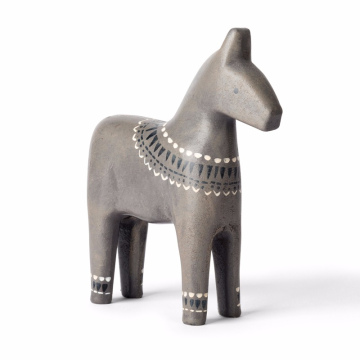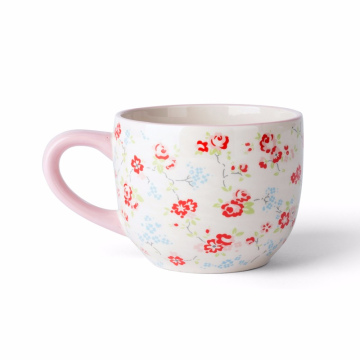Introduction to Yakitori
Yakitori, a quintessential component of Japanese cuisine, translates to "grilled chicken." Rooted in the Edo period (1603-1868), this culinary delight began as a simple street food, allowing people to savor skewered chicken while on the go. Over the years, yakitori has evolved from these humble beginnings into a beloved dish, celebrated across Japan for its diverse flavor profiles and unique preparation methods. It is now a staple in izakayas—casual drinking establishments—and dedicated yakitori restaurants, where chefs specialize in this art form.
The preparation of yakitori offers a fascinating glimpse into Japanese culinary practices. Various parts of the chicken can be used, each bringing its own distinct texture and flavor to the dish. Common cuts include juicy thigh meat (momo), tender breast (sasami), and flavorful organs such as liver (reba) and heart (hatsu). The grilling process is crucial, as it is often performed over a charcoal fire, which imparts a rich smokiness that enhances the natural flavors of the chicken.
Seasonings play a vital role in the taste of yakitori. Traditionally, chicken skewers are seasoned with either a salt-based mixture known as shio or a savory sauce called tare, which combines soy sauce, mirin, and sugar. This dual approach to seasoning allows for significant variation in taste, accommodating preferences ranging from simple and subtle to rich and complex.
As the popularity of yakitori has spread, it has also become emblematic of more than just a meal; it represents a communal dining experience. Often enjoyed with friends or family, the act of grilling and sharing these skewers fosters a sense of connection, deeply rooted in Japanese culture. This introduction paves the way for a deeper exploration into the social aspects and regional variations of yakitori across Japan.
Grilled to Perfection: Discovering Yakitori in Japan
Explore the rich history, preparation methods, and regional variations of Yakitori, the beloved Japanese grilled chicken skewer. Discover the art of grilling, the importance of seasoning, and the best places to enjoy this culinary delight in Japan. From the bustling izakayas of Tokyo to hidden rural gems, immerse yourself in the flavors and communal dining experience that defines Yakitori culture. Whether you prefer shio or tare seasoning, learning about Yakitori offers insight into Japan's culinary heritage and pairing beverages like sake and shochu enhances the experience. Join us on this delicious journey into one of Japan's most cherished dishes.
The Art of Sushi Making
Sushi is not merely a dish; it is an intricate art form that embodies the harmonious relationship between food preparation and mindfulness. The history of sushi dates back centuries, originating in Southeast Asia as a method of preserving fish in fermented rice. Over time, the practice evolved into what we now recognize as sushi, particularly in Japan, where it gained considerable popularity. Today, sushi chefs meticulously craft various styles, each defined by unique ingredients and preparation methods. The three predominant types of sushi include nigiri, sashimi, and maki.
Nigiri consists of a small mound of vinegared rice topped with a slice of raw fish or seafood, highlighting the delicate balance between flavor and texture. Sashimi, in contrast, is simply thinly sliced fish served without rice, showcasing the freshness and quality of the ingredients. Maki, on the other hand, involves rolling rice and fillings in seaweed, offering a variety of combinations that cater to diverse palates. The choice of ingredients—ranging from fresh fish to seasonal vegetables—plays a pivotal role in defining each sushi type.
The process of sushi making emphasizes precision and mindfulness, turning it into a meditative experience. Sushi chefs, known as itamae, dedicate years to hone their skills, mastering the art of rice preparation, fish selection, and knife techniques. Each movement is performed with intention, inviting calm and focus. This meticulous approach not only enhances the quality of the sushi but also transforms the act of creating it into a form of meditation, fostering a peaceful state of mind. Thus, the art of sushi is not only about culinary skill but also the serenity that comes from engaging deeply with the craft.
Culinary Traditions and Serenity
In Japan, sushi is not merely a meal; it encompasses a rich tapestry of cultural traditions that embody simplicity and mindfulness. The preparation and consumption of sushi often reflect the core principles of Japanese culinary arts, where attention to detail and a deep appreciation for the ingredients play a vital role. Sushi craftsmen, known as itamae, dedicate years to perfecting their skills, ensuring that each piece of sushi is crafted with precision and respect for the ingredients, which are typically sourced with great care. This meticulous approach fosters a profound connection between the chef, the ingredients, and the diners, contributing to a serene dining experience.
Dining establishments specializing in sushi often promote tranquility through their atmosphere. Soft lighting, minimalistic decor, and the gentle sounds of water can create a peaceful environment that encourages patrons to embrace the present moment. This harmony is further enhanced by the act of eating sushi itself—where one is often reminded of the beauty found in simplicity. By focusing on clean flavors and fresh ingredients, sushi encourages mindfulness, inviting diners to appreciate every bite and savor the intricate balance of taste and texture.
Personal experiences in various sushi restaurants reveal the calming effects these traditions impart. Observing the disciplined artistry of the chefs as they prepare each sushi piece, one finds a sense of stillness and focus. The ritual of selecting a piece of sushi, dipping it in soy sauce, and taking the time to relish its flavors often transcends mere sustenance; it becomes a meditative practice that cultivates inner peace. As diners engage in this process, they are gently reminded to embrace warmth, simplicity, and the moment at hand—qualities that are foundational to the Japanese way of life.
Through these practices and experiences, one begins to understand how sushi serves as a vehicle for serenity, enriching both the culinary landscape and the spirit of those who partake in its enjoyment.
Sushi: A Journey Through the Flavors of Japan
Sushi is not merely a dish; it embodies the intricate relationship between culture, geography, and culinary artistry in Japan. As one travels through the archipelago, each region presents its own unique flavors and styles, deeply influenced by local ingredients and traditions. Beginning in Hokkaido, renowned for its cold waters, sushi here showcases some of the freshest seafood in Japan, particularly prized catches such as Uni (sea urchin) and Crab. The presentation is often minimalist, allowing the vibrant colors and textures of the fish to evoke a sense of tranquility and respect for nature.
Moving southward to the bustling markets of Tokyo, one will discover Edomae sushi, which emphasizes seasonal ingredients and meticulous preparation techniques. This sushi style offers nigiri topped with marinated or lightly grilled fish, imbued with umami flavors that represent the artistry of urban sushi chefs. Each piece is a sensory delight, inviting diners to appreciate the harmony between the prepared ingredients and the rice.
Visiting the southernmost reaches of Japan, Okinawa presents a departure from traditional sushi, instead featuring local fish that are often served in unique preparations. Ingredients like Goya (bitter melon) and various seaweeds add a local distinctiveness rarely encountered in other parts of Japan. The sushi style here is more casual and communal, often enjoyed during family gatherings, emphasizing the bonds formed over shared meals.
Throughout each region, the aesthetic appeal of sushi plays a significant role; chefs pay attention to the colors, shapes, and arrangements on the plate, creating a sensory experience that transcends taste. As one indulges in these diverse offerings, the serene atmosphere surrounding sushi dining becomes apparent, allowing for a deep appreciation of Japan's culinary landscape and the flavors that connect it to its natural beauty.
Finding Peace Through Culinary Experiences
Engaging with sushi goes beyond the mere enjoyment of a meal; it can serve as a profoundly peaceful practice that fosters mindfulness and emotional well-being. The ritual surrounding sushi preparation and consumption intertwines with Japanese culture, where food is not only sustenance but also an art form. By focusing on the experience of sushi, individuals may discover a source of serenity that enriches their lives.
Food has been recognized for its ability to promote inner calm. In many cultures, including Japan, meals are often viewed as an opportunity to connect with one’s surroundings and to appreciate the present moment. The act of preparing sushi can itself become a meditative practice. By engaging in the careful selection of fresh ingredients, mastering the art of vinegared rice, and creating visually appealing presentations, one can find solace in the creation process. Incorporating mindfulness during food preparation—paying attention to textures, colors, and flavors—can enhance the overall experience and contribute to a state of tranquility.
To replicate this peaceful sushi experience at home, consider implementing simple sushi-making practices. Start with basic rolls or nigiri that don’t require extensive skill. Gather fresh ingredients and create a serene atmosphere in your kitchen, perhaps with calming music or soft lighting, to enhance immersion. Another crucial aspect involves the act of mindful eating. Slow down while enjoying sushi, allowing the flavors to unfold in your mouth. Focus on the textures and tastes, savoring each bite as a moment of stillness in your day.
Establishing a tranquil environment for sushi enjoyment will further deepen the impact of this culinary experience. Whether you choose to dine alone or with others, creating a setting that promotes relaxation—such as decluttering the dining area or using soft colors in decor—can amplify the emotional benefits derived from sushi.




